Snowflake Bionic Flow Channel Design to Optimize the Pressure Drop and Flow Uniform of Proton Exchange Membrane Fuel Cells
Abstract
:1. Introduction
2. Numerical Model
2.1. Geometric Model
2.2. Governing Equations
3. Results and Discussion
3.1. Feasibility and Advantage of Snowflake Bionic Flow Channel
3.2. Local Distribution and Transport Characteristics for the Snowflake Flow Channel
3.3. Muti-Objection and Multi-Parameter Optimization of the Snowflake Flow Channel
(P25 − P26) × 2 + (P25 − P27) × 2 + (P29 − P28) × 2 + (P29 − P30) × 2
4. Conclusions
Author Contributions
Funding
Institutional Review Board Statement
Informed Consent Statement
Data Availability Statement
Conflicts of Interest
Nomenclature
| Par. | Definitions | Par. | Definitions |
| Pop | Operating pressure, Pa | ε | Porosity |
| R | Universal gas constant, 8.314 J mol−1 K−1 | ρ | Density, kg m−3 |
| T | Operating temperature, K | u | Velocity vector, m s−1 |
| Xk | Mole fraction of substance | μ | Viscosity, kg m−1 s−1 |
| Ck | Mass fraction of substance | ƞ | Overpotential |
| CF | Quadratic drag factor | λ | Water content in membrane |
| kp | Permeability, m2 | ρdry | Membrane dry density, kg m−3 |
| krg | Relative permeability of the gaseous mixture | σs | Electron conductivity, s m−1 |
| Dk,eff | Effective diffusion coefficient of substance k | σm | Proton conductivity, s m−1 |
| F | Faraday constant, 96.487 °C mol−1 | Φs | Electronic phase potential, V |
| j | Transfer current density, A m−3 | Φm | Ionic phase potential, V |
| M | Molecular weight, kg mol−1 | nd | Electro-osmotic drag coefficient |
| im | Current density in the membrane, A m−2 | Pc | Capillary pressure, Pa |
| Mm | Membrane equivalent weight, kg mol−1 | Subscripts | |
| Dλ | Water diffusivity in the membrane | a | Anode |
| Aj0 | Exchange current density, A m−3 | c | Cathode |
| C | Mass fraction | l | Liquid phase |
| Vcell | Operating voltage v | ref | Reference value |
References
- Damian-Ascencio, C.E.; Saldaa-Robles, A.; Hernandez-Guerrero, A.; Cano-Andrade, S. Numerical modeling of a proton exchange membrane fuel cell with tree-like flow field channels based on an entropy generation analysis. Energy 2017, 133, 306–316. [Google Scholar] [CrossRef]
- Rostami, L.; Nejad, P.M.G.; Vatani, A. A numerical investigation of serpentine flow channel with different bend sizes in polymer electrolyte membrane fuel cells. Energy 2016, 97, 400–410. [Google Scholar] [CrossRef]
- Qi, Z.; Kaufman, A. PEM fuel cell stacks operated under dry-reactant conditions. J. Power Sources 2002, 109, 469–476. [Google Scholar] [CrossRef]
- Karthikeyan, M.; Muthukumar, M.; Kannan, V.M.; Thanarajan, K.; Maiyalagan, T.; Hong, C.-W.; Jothi, V.R.; Yi, S.-C. Adoption of novel porous inserts in the flow channel of pem fuel cell for the mitigation of cathodic flooding. Int. J. Hydrogen Energy 2020, 45, 7863–7872. [Google Scholar] [CrossRef]
- Spernjak, D.; Prasad, A.K.; Advani, S.G. In situ comparison of water content and dynamics in parallel, single-serpentine, and interdigitated flow fields of polymer electrolyte membrane fuel cells. J. Power Sources 2010, 195, 3553–3568. [Google Scholar] [CrossRef]
- Wilberforce, T.; El Hassan, Z.; Ogungbemi, E.; Ijaodola, O.; Khatib, F.; Durrant, A.; Thompson, J.; Baroutaji, A.; Olabi, A. A comprehensive study of the effect of bipolar plate (BP) geometry design on the performance of proton exchange membrane (PEM) fuel cells. Renew. Sustain. Energy Rev. 2019, 111, 236–260. [Google Scholar] [CrossRef]
- Atyabi, A.; Afshari, E.; Wongwises, S.; Yan, W.-M.; Hadjadj, A.; Shadloo, M.S. Effects of assembly pressure on PEM fuel cell performance by taking into accounts electrical and thermal contact resistances. Energy 2019, 179, 490–501. [Google Scholar] [CrossRef]
- Li, X.; Sabir, I. Review of bipolar plates in PEM fuel cells: Flow-field designs. Int. J. Hydrogen Energy 2005, 30, 359–371. [Google Scholar] [CrossRef]
- Tüber, K.; Oedegaard, A.; Hermann, M.; Hebling, C. Investigation of fractal flow-fields in portable proton exchange membrane and direct methanol fuel cells. J. Power Sources 2004, 131, 175–181. [Google Scholar] [CrossRef]
- Neto, D.M.; Oliveira, M.C.; Alves, J.L.; Menezes, L.F. Numerical study on the formability of metallic bipolar plates for proton exchange membrane (PEM) fuel cells. Metals 2019, 9, 810. [Google Scholar] [CrossRef] [Green Version]
- Jang, J.-Y.; Cheng, C.-H.; Liao, W.-T.; Huang, Y.-X.; Tsai, Y.-C. Experimental and numerical study of proton exchange membrane fuel cell with spiral flow channels. Appl. Energy 2012, 99, 67–79. [Google Scholar] [CrossRef]
- Friess, B.R.; Hoorfar, M. Development of a novel radial cathode flow field for PEMFC. Int. J. Hydrogen Energy 2012, 37, 7719–7729. [Google Scholar] [CrossRef]
- Cano-Andrade, S.; Hernández-Guerrero, A.; Von Spakovsky, M.; Damian, C.; Rubio-Arana, J. Current density and polarization curves for radial flow field patterns applied to PEMFCs (Proton Exchange Membrane Fuel Cells). Energy 2010, 35, 920–927. [Google Scholar] [CrossRef]
- Guo, N.; Leu, M.C.; Koylu, U.O. Network based optimization model for pin-type flow field of polymer electrolyte membrane fuel cell. Int. J. Hydrogen Energy 2013, 38, 6750–6761. [Google Scholar] [CrossRef]
- Wilberforce, T.; Khatib, F.; Ijaodola, O.; Ogungbemi, E.; El-Hassan, Z.; Durrant, A.; Thompson, J.; Olabi, A. Numerical modelling and CFD simulation of a polymer electrolyte membrane (PEM) fuel cell flow channel using an open pore cellular foam material. Sci. Total Environ. 2019, 678, 728–740. [Google Scholar] [CrossRef]
- Wang, X.-D.; Lu, G.; Duan, Y.-Y.; Lee, D.-J. Numerical analysis on performances of polymer electrolyte membrane fuel cells with various cathode flow channel geometries. Int. J. Hydrogen Energy 2012, 37, 15778–15786. [Google Scholar] [CrossRef]
- Roshandel, R.; Arbabi, F.; Moghaddam, G.K. Simulation of an innovative flow-field design based on a bio inspired pattern for PEM fuel cells. Renew. Energy 2012, 41, 86–95. [Google Scholar] [CrossRef]
- Guo, N.N.; Leu, M.C.; Koylu, U.O. Bio-inspired flow field designs for polymer electrolyte membrane fuel cells. Int. J. Hydrogen Energy 2014, 39, 21185–21195. [Google Scholar] [CrossRef]
- Saripella, B.P.; Koylu, U.O.; Leu, M.C. Experimental and computational evaluation of performance and water management characteristics of a bio-inspired proton exchange membrane fuel cell. J. Fuel Cell Sci. Technol. 2015, 12, 061007. [Google Scholar] [CrossRef]
- Ouellette, D.; Ozden, A.; Ercelik, M.; Colpan, C.O.; Ganjehsarabi, H.; Li, X.; Hamdullahpur, F. Assessment of different bio-inspired flow fields for direct methanol fuel cells through 3D modeling and experimental studies. Int. J. Hydrogen Energy 2017, 43, 1152–1170. [Google Scholar] [CrossRef]
- Ozden, A.; Ercelik, M.; Ouellette, D.; Colpan, C.O.; Ganjehsarabi, H.; Hamdullahpur, F. Designing, modeling and performance investigation of bio-inspired flow field based DMFCs. Int. J. Hydrogen Energy 2017, 42, 21546–21558. [Google Scholar] [CrossRef]
- Trogadas, P.; Cho, J.I.S.; Neville, T.P.; Marquis, J.; Wu, B.; Brett, D.J.L.; Coppens, M.-O. A lung-inspired approach to scalable and robust fuel cell design. Energy Environ. Sci. 2018, 11, 136–143. [Google Scholar] [CrossRef] [Green Version]
- Cho, J.; Neville, T.; Trogadas, P.; Bailey, J.; Shearing, P.; Brett, D.; Coppens, M.-O. Capillaries for water management in polymer electrolyte membrane fuel cells. Int. J. Hydrogen Energy 2018, 43, 21949–21958. [Google Scholar] [CrossRef]
- Cho, J.; Neville, T.; Trogadas, P.; Meyer, Q.; Wu, Y.; Ziesche, R.; Boillat, P.; Cochet, M.; Manzi-Orezzoli, V.; Shearing, P.; et al. Visualization of liquid water in a lung-inspired flow-field based polymer electrolyte membrane fuel cell via neutron radiography. Energy 2019, 170, 14–21. [Google Scholar] [CrossRef]
- Currie, J.M. Biomimetic Design Applied to the Redesign of a Pem Fuel Cell Flow Field; University of Toronto: Toronto, ON, Canada, 2010. [Google Scholar]
- Abdulla, S.; Patnaikuni, V.S. Detailed analysis of polymer electrolyte membrane fuel cell with enhanced cross-flow split serpentine flow field design. Int. J. Energy 2019, 43, 2806–2820. [Google Scholar] [CrossRef]
- Arvay, A.; French, J.; Wang, J.-C.; Peng, X. Modeling and simulation of biologically inspired flow field designs for proton exchange membrane fuel cells. Open Electrochem. J. 2015, 6, 1–9. [Google Scholar]
- Joshua, H. Bio-Inspired Flow Fields for PEM Fuel Cells Decoupling Pressure and Distribution Effects on Performance and Identifying Design Opportunities; Missouri University of Science and Technology: Rolla, MO, USA, 2017. [Google Scholar]
- Asadzade, M.; Shamloo, A. Design and simulation of a novel bipolar plate based on lung-shaped bio-inspired flow pattern for PEM fuel cell. Int. J. Energy Res. 2017, 41, 1730–1739. [Google Scholar] [CrossRef]
- Brkić, D.; Praks, P. Air-forced flow in proton exchange membrane fuel cells: Calculation of fan-induced friction in open-cathode conduits with virtual roughness. Processes 2020, 8, 686. [Google Scholar] [CrossRef]
- Barreras, F.; López, A.M.; Lozano, A.; Barranco, J.E. Experimental study of the pressure drop in the cathode side of air-forced open-cathode proton exchange membrane fuel cells. Int. J. Hydrogen Energy 2011, 36, 7612–7620. [Google Scholar] [CrossRef]
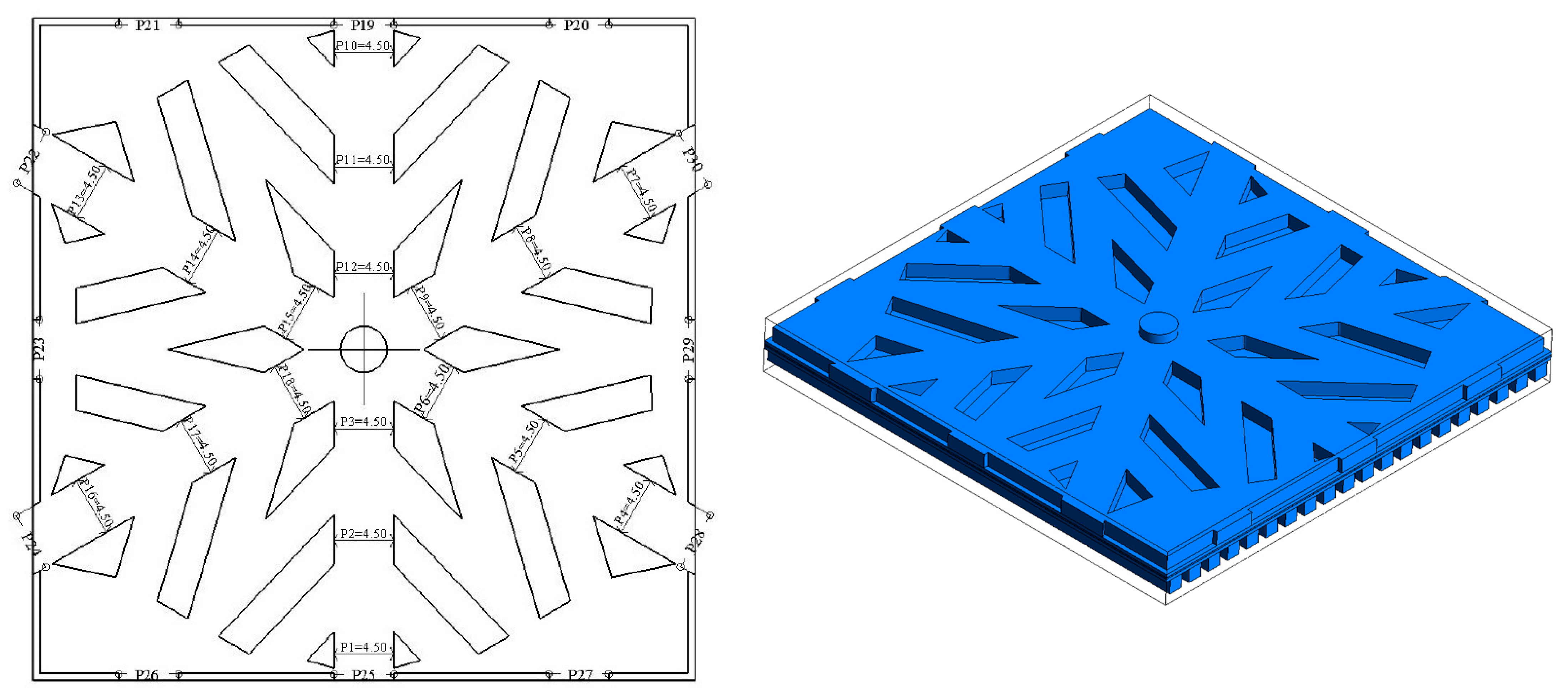
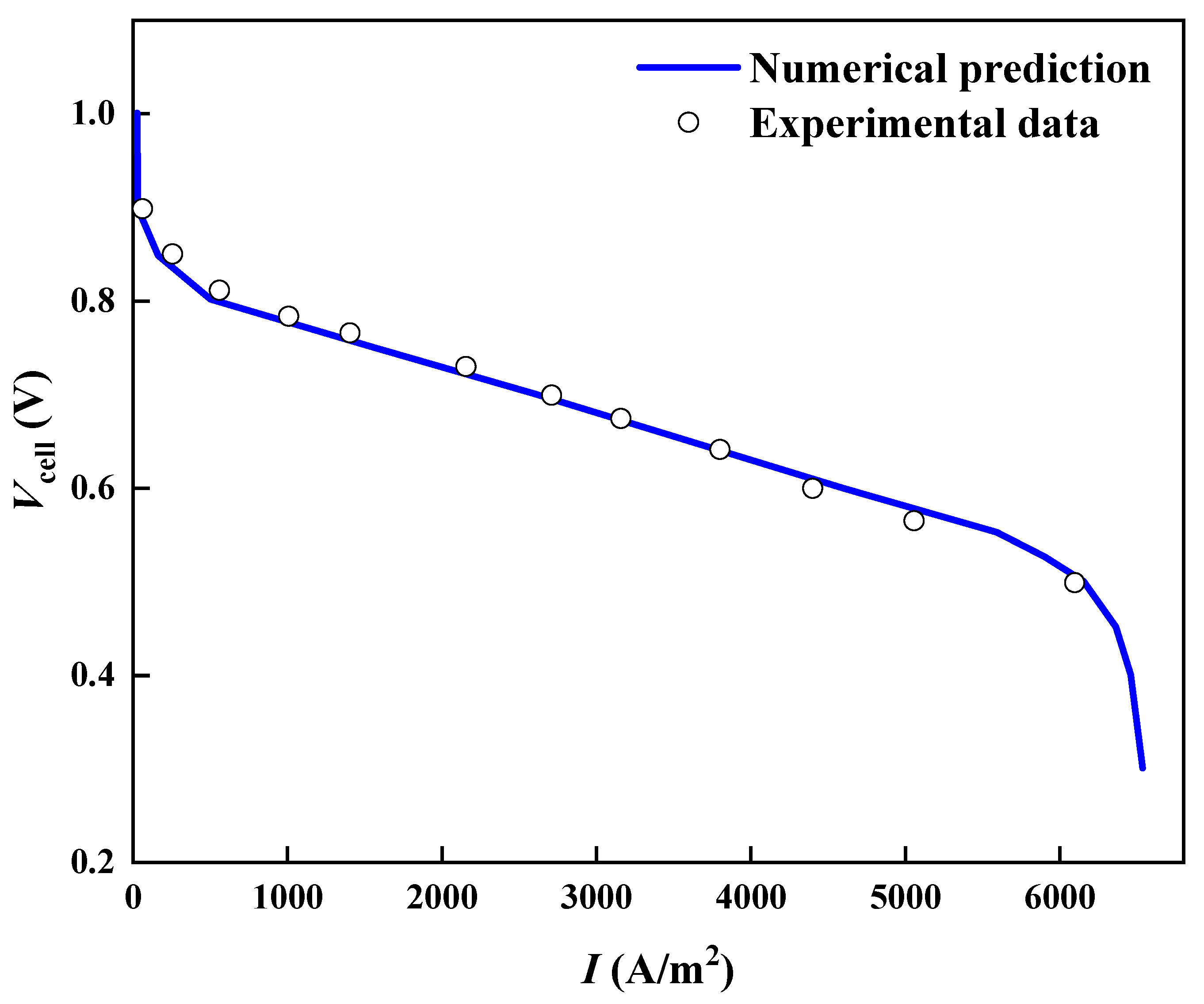
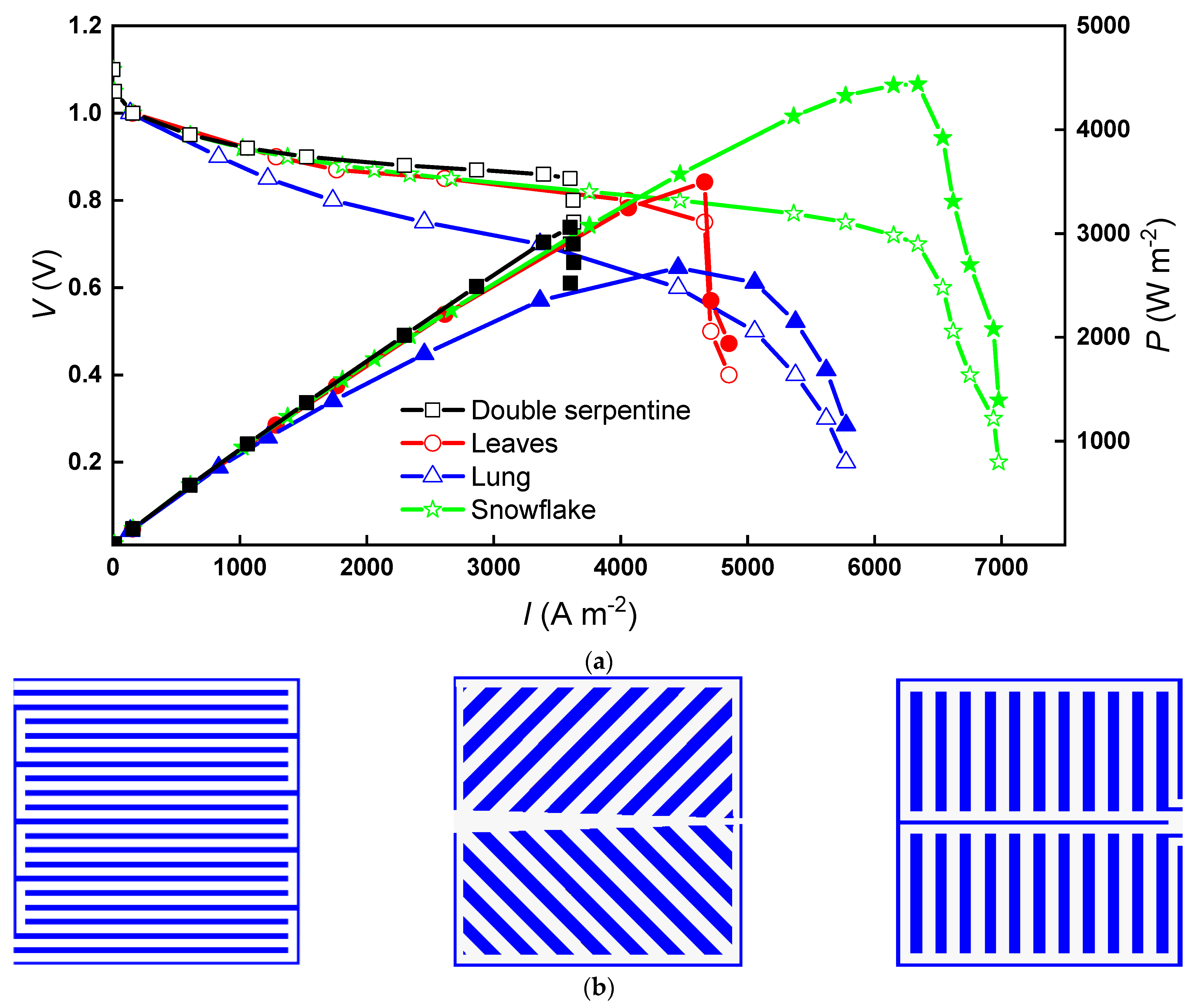
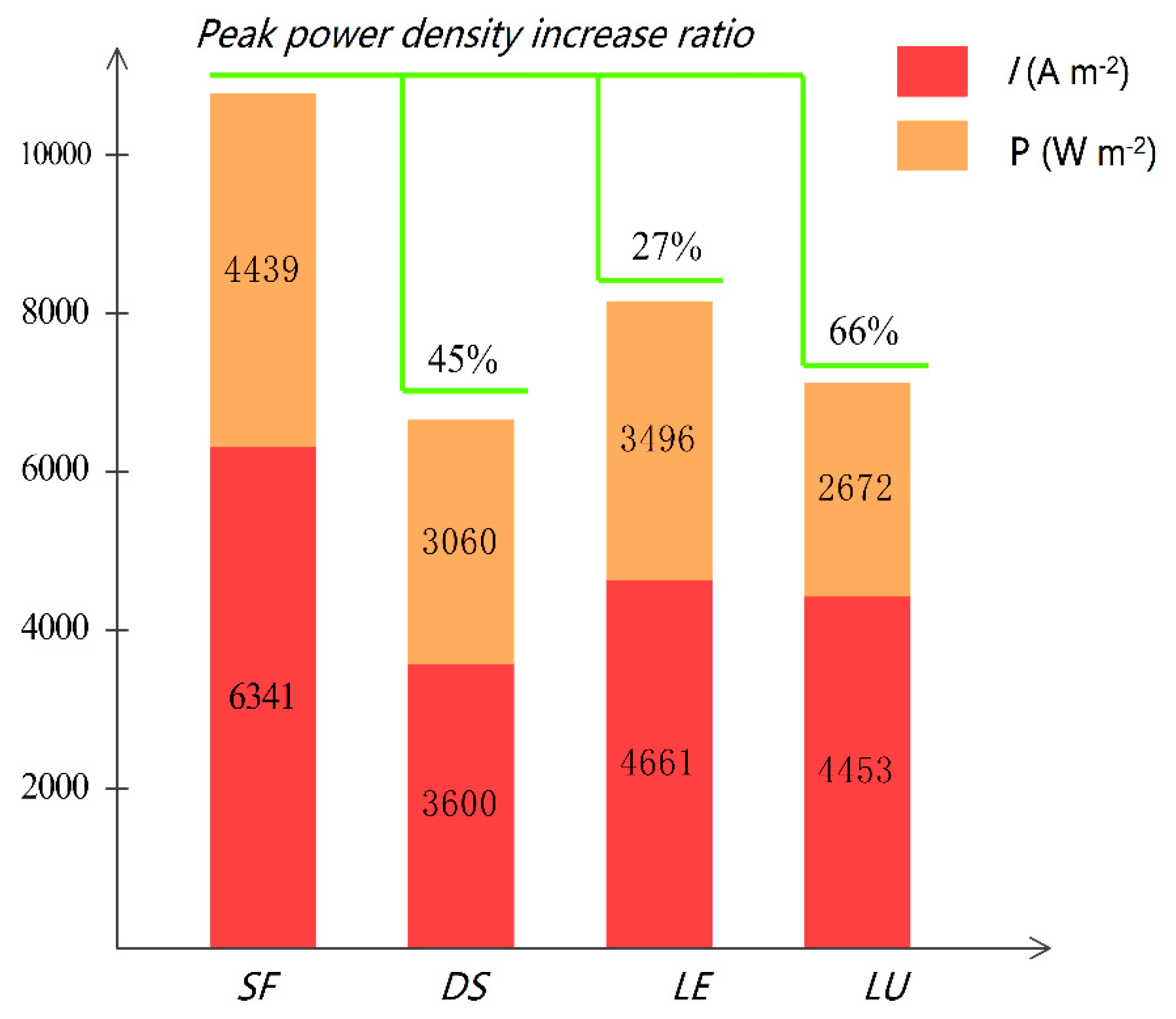
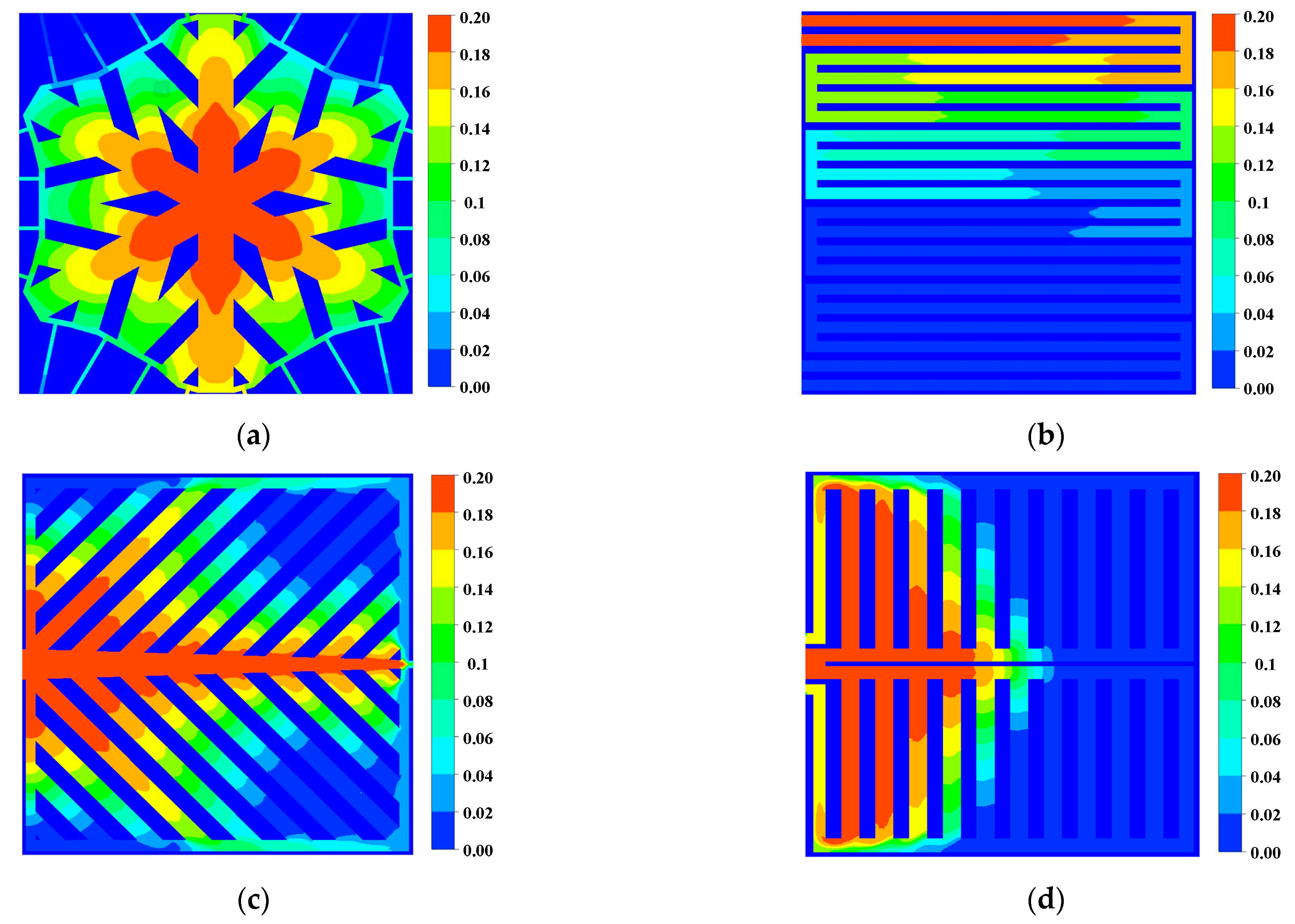
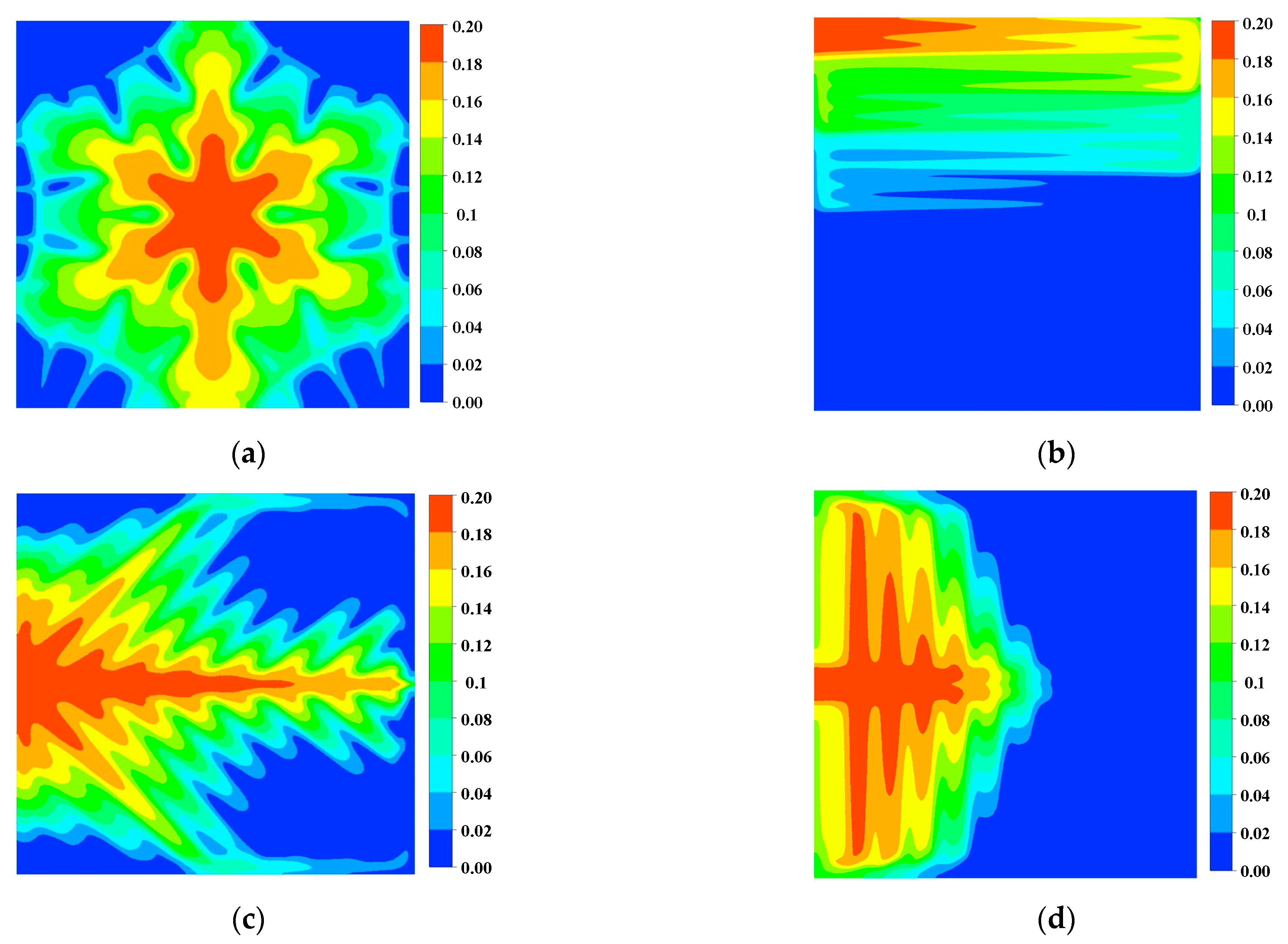
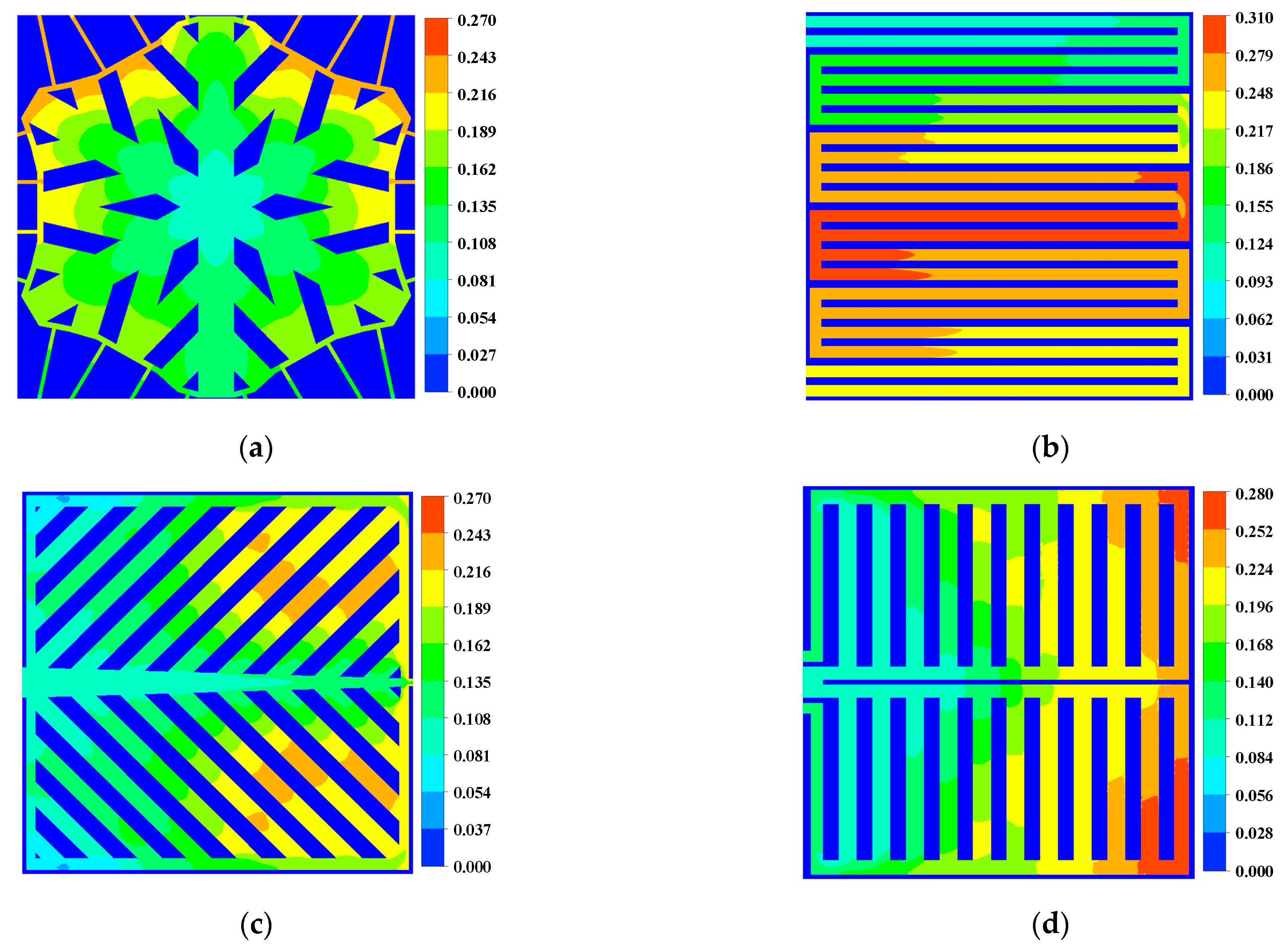


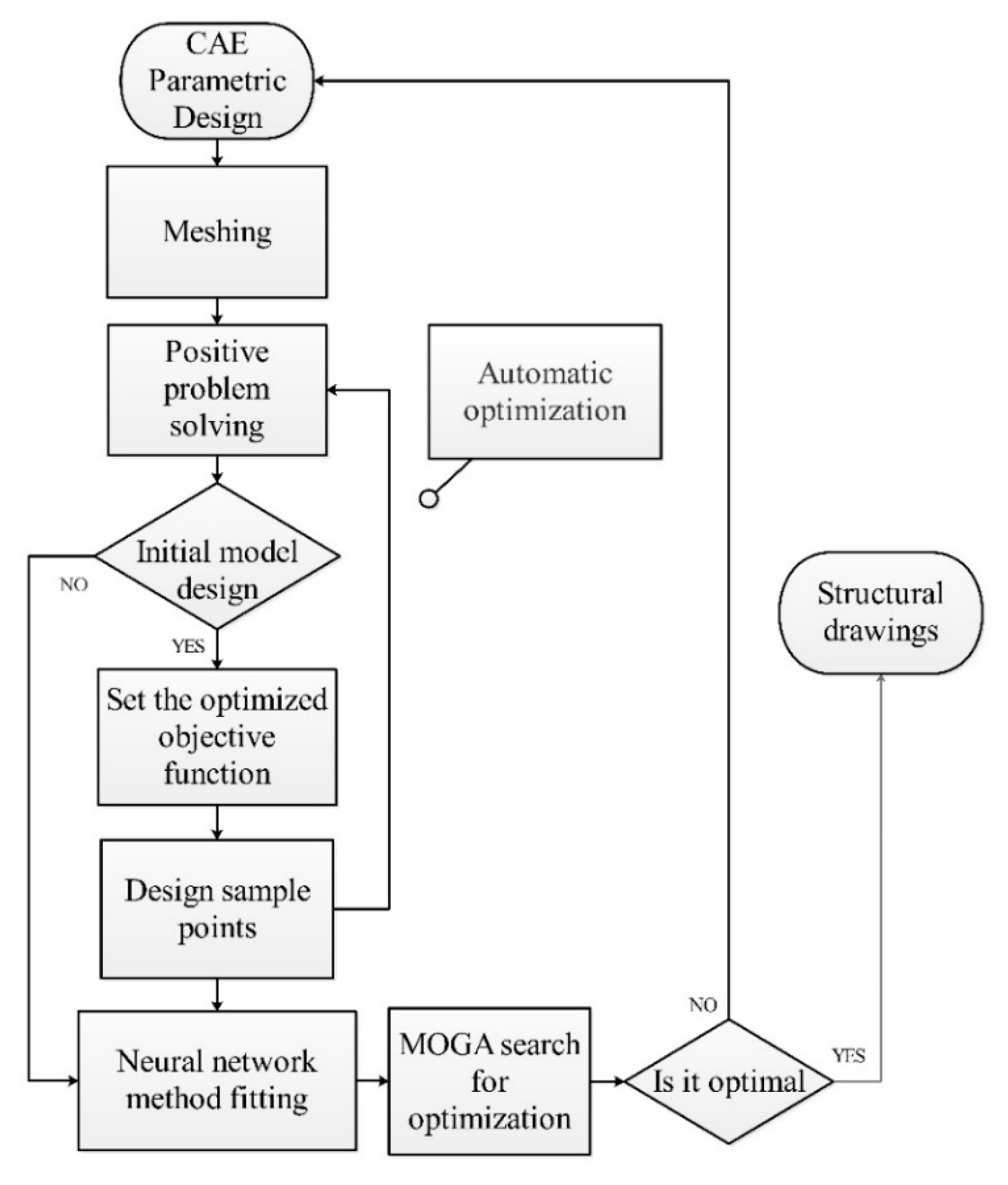
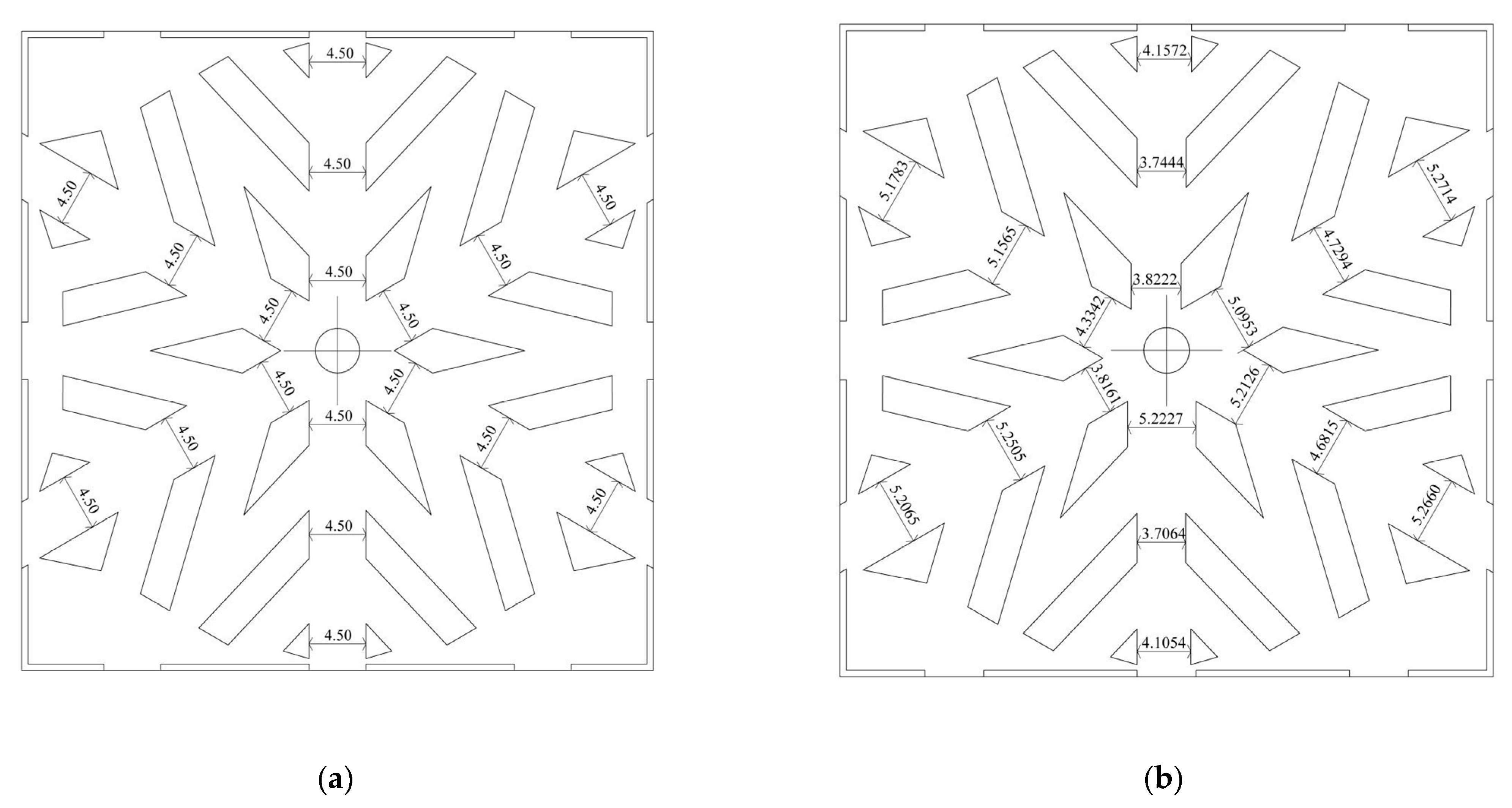
| Year | Peak Power Density/w cm−2 | Pressure Drop/pa | Advantages | Disadvantages | Figure |
|---|---|---|---|---|---|
| 2010 [5] | 0.276 | 212 | Small pressure drop. | The low channel flow rate results in low differential pressure across the battery. The diffusion ability of reactant to diffusion layer and drainage ability is poor, forming slug. |  |
| 2010 [5] | 0.45 | 3295 | The large pressure drop between adjacent flow channels leads to the additional benefits of sub-rib convection bypass, which is beneficial to drainage and diffusion is the main transport mechanism of a single serpentine channel. | The parasitic loss and the pressure difference between the cathode and the anode are large and the membrane may be damaged. Increasing the cell area may cause an excessive pressure drop in the flow field. |  |
| 2010 [5] | 0.423 | 5688 | Despite its high water content, it does not affect battery performance. It is a promising form of the flow channel and convection under the ribs has proven to be very beneficial for battery performance. | Large pressure drop and uneven distribution. |  |
| 2012 [11] | 0.55 | 250 | Enhance the lateral transport phenomenon and increase the heat and mass transfer significantly. The inlet and outlet channels are adjacent and the pressure drop forces the reactant gas in the channel to flow through the gas diffusion layer and the catalyst layer and complementing the lack of reactants in the outlet channel. The outlet channel is smaller in size than the inlet, helping to remove moisture from the porous layer. | Around the circular area connecting the inlet and the outlet, especially where there is no flow channel, water will accumulate on the catalytic layer, reducing the contact area of the reaction. |  |
| 2013 [14] | 0.207 | small | Widely used flow field configuration with the advantage of reduced pressure. | There are disadvantages of uneven flow distribution and stagnation zone. |  |
| 2013 [14] | 0.587 | N/A | Easy to manufacture, the shape of the channel takes into account the consumption of reactants. Speed distribution is uniform. Water management is good, management is good. |  | |
| 2012 [17] | 1.1 (Ignore the effects of water) | As the reactants approach the outlet, the cross-sectional area of the main channel decreases and increased pressure forces the species to flow laterally, which will allow the reactants to spread more evenly across the diffusion layer. | There are many reactants attached to the outlet wall; there may be insufficient reactants between the downstream ribs. |  | |
| 2014 [18] | 0.57 | 6485 | Using Murray’s law to narrow the third branch, the mass fraction of oxygen and oxygen is more uniform. | The designed inlet and outlet channels are disconnected and a large pressure drop is expected, which means that there is forced convection in the channel. |  |
| 2015 [19] | 0.302 | 29,900 | More uniform reactant concentration and velocity distribution. Higher consumption of reactants. Geometry crosses each other to enhance the drainage effect of sub-rib flow. In relatively small channels, surface tension, inertial and viscous forces dominate, while gravity is negligible. | The designed inlet and outlet channels are disconnected and a large pressure drop is expected, which means that there is forced convection in the channel. |  |
| 2017 [21] | 0.088 (Methanol) | Good quality transportation ability, strong water management ability. | The overall effect is not ideal. |  | |
| 2017 [21] | 0.088 (Methanol) | Good quality transportation ability, strong water management ability. | The overall effect is not ideal. |  | |
| 2018 [22] | 0.54 | 2000 | The repeated branching and fractal structure ensure a uniform distribution of oxygen within a given volume. The pressure drop is the same for each branch. The self-similar structure of the lung remains thermodynamically optimal. | The complex manufacturing process has an excellent performance in low humidity conditions; in contrast, it is easy to accumulate water. |  |
| 2019 [26] | 0.83 | 5500 | Enhances lateral flow of reactants and replenishment of fresh oxygen. Enhance water management. Membrane with good water content and better proton conductivity. | Large pressure drop, there will still be poor water management downstream. |  |
| 2015 [27] | 0.44 | 4155 | Improved standard finger-fork shape, reduced pressure drop, better uniformity. | Large pressure drop, the poor overall effect. |  |
| 2015 [27] | 0.42 | 208 | Apply Murray’s Law to calculate branch width. | The reactants are unevenly distributed, the pressure drop is large, and the overall effect is worse than that of a single snake-type flow field. |  |
| 2017 [28] | 1.6 (Output power at each pump work) | Efficiently partition reactants and remove products with minimal flow loss. Low pump power and low humidity. | Lower current density results in more severe membrane dehydration, which reduces performance. |  | |
| 2017 [29] | 0.99 | 3.17 | Suitable fluid flow rate, no dead point. Reduced production costs and production time. | Uneven fuel distribution and low fuel utilization. |  |
| Parameters | Value |
|---|---|
| Anode reference current density, A m−2 | 10,000 |
| Cathode reference current density, A m−2 | 20 |
| Anode reference concentration, kmol m−3 | 1.0 |
| Cathode reference concentration, kmol m−3 | 1.0 |
| Anode concentration exponent | 0.5 |
| Cathode concentration exponent | 1.0 |
| Anode exchange coefficient | 2 |
| Cathode exchange coefficient | 2 |
| Open-circuit voltage, V | 1.1 |
| Current collector effective conductivity, 1 (Ω·m)−1 | 1 × 106 |
| Diffusion layer porosity | 0.5 |
| Diffusion layer viscous resistance, 1 m−2 | 1 × 1012 |
| Diffusion layer effective conductivity, 1 (Ω·m)−1 | 5000 |
| Catalyst layer porosity | 0.5 |
| Diffusion layer viscous resistance, 1 m−2 | 1 × 1012 |
| Catalyst layer effective conductivity, 1 (Ω·m)−1 | 5000 |
| Catalyst layer specific surface area, 1 m−1 | 2 × 105 |
| Reference diffusivity, m2 s−1 | 3 × 10−5 |
| Membrane equivalent weight, kg kmol−1 | 1 100 |
| Membrane protonic conduction coefficient | 1.0 |
| Membrane protonic conduction exponent | 1.0 |
| Membrane effective conductivity, 1 (Ω·m)−1 | 1 × 10−16 |
| Voltage | Pressure Drop | |||
|---|---|---|---|---|
| (V) | Dual Serpentine | Leaf Shape | Lung Shape | Snowflake Shape |
| Range (pa) | Range (pa) | Range (pa) | Range (pa) | |
| 0.2 | 0.21–59.23 | 8.59–17.65 | 1.41–14.11 | 0.09–1.14 |
| 0.3 | 0.21–59.49 | 8.06–16.55 | 1.40–13.80 | 0.09–1.15 |
| 0.4 | 0.21–59.56 | 8.64–17.34 | 1.40–14.17 | 0.09–1.16 |
| 0.5 | 0.22–60.02 | 8.37–17.00 | 1.37–10.82 | 0.09–1.09 |
| 0.6 | 0.22–59.81 | 8.30–16.83 | 1.30–9.80 | 0.09–1.17 |
| 0.7 | 0.23–59.91 | 8.19–16.57 | 1.27–9.66 | 0.09–1.16 |
| 0.8 | 0.22–58.44 | 7.81–16.08 | 1.25–5.55 | 0.08–1.10 |
| 0.9 | 0.22–54.82 | 7.78–15.88 | 1.21–1.59 | 0.08–1.06 |
| 1.0 | 0.22–54.28 | 7.85–15.97 | 4.77–7.16 | 0.08–1.04 |
| Input | Output | ||||
|---|---|---|---|---|---|
| Before Optimization | After Optimization | Before Optimization | After Optimization | ||
| P1 | 4.5 mm | 4.1128 | P19 main | 1.257 × 10−7 | 1.1706 × 10−7 |
| P2 | 4.5 mm | 4.3572 | P20 branch | 1.0541 × 10−7 | 9.8605 × 10−8 |
| P3 | 4.5 mm | 5.1785 | P21 branch | 1.0624 × 10−7 | 1.1115 × 10−7 |
| P4 | 4.5 mm | 5.2118 | P22 main | 8.9896 × 10−8 | 1.0124 × 10−7 |
| P5 | 4.5 mm | 5.2723 | P23 branch | 1.6012 × 10−7 | 1.6043 × 10−7 |
| P6 | 4.5 mm | 5.293 | P24 main | 9.105 × 10−7 | 1.0011 × 10−7 |
| P7 | 4.5 mm | 4.5752 | P25 main | 1.2435 × 10−7 | 1.0865 × 10−7 |
| P8 | 4.5 mm | 5.2457 | P26 branch | 1.0516 × 10−7 | 1.1415 × 10−7 |
| P9 | 4.5 mm | 3.7166 | P27 branch | 1.513 × 10−7 | 9.6089 × 10−8 |
| P10 | 4.5 mm | 5.2221 | P28 main | 8.8445 × 10−8 | 9.4439 × 10−8 |
| P11 | 4.5 mm | 5.2697 | p29 branch | 1.5974 × 10−7 | 1.5435 × 10−7 |
| P12 | 4.5 mm | 3.8161 | P30 main | 8.9976 × 10−7 | 9.4862 × 10−8 |
| P13 | 4.5 mm | 5.1571 | P31deviation | 2.1188 × 10−14 | 1.4835 × 10−14 |
| P14 | 4.5 mm | 4.2994 | |||
| P15 | 4.5 mm | 3.7291 | |||
| P16 | 4.5 mm | 3.819 | |||
| P17 | 4.5 mm | 5.2364 | |||
| P18 | 4.5 mm | 4.7414 |
Publisher’s Note: MDPI stays neutral with regard to jurisdictional claims in published maps and institutional affiliations. |
© 2022 by the authors. Licensee MDPI, Basel, Switzerland. This article is an open access article distributed under the terms and conditions of the Creative Commons Attribution (CC BY) license (https://creativecommons.org/licenses/by/4.0/).
Share and Cite
Li, Y.; Bi, J.; Tang, M.; Lu, G. Snowflake Bionic Flow Channel Design to Optimize the Pressure Drop and Flow Uniform of Proton Exchange Membrane Fuel Cells. Micromachines 2022, 13, 665. https://doi.org/10.3390/mi13050665
Li Y, Bi J, Tang M, Lu G. Snowflake Bionic Flow Channel Design to Optimize the Pressure Drop and Flow Uniform of Proton Exchange Membrane Fuel Cells. Micromachines. 2022; 13(5):665. https://doi.org/10.3390/mi13050665
Chicago/Turabian StyleLi, Yuting, Jingliang Bi, Miao Tang, and Gui Lu. 2022. "Snowflake Bionic Flow Channel Design to Optimize the Pressure Drop and Flow Uniform of Proton Exchange Membrane Fuel Cells" Micromachines 13, no. 5: 665. https://doi.org/10.3390/mi13050665
APA StyleLi, Y., Bi, J., Tang, M., & Lu, G. (2022). Snowflake Bionic Flow Channel Design to Optimize the Pressure Drop and Flow Uniform of Proton Exchange Membrane Fuel Cells. Micromachines, 13(5), 665. https://doi.org/10.3390/mi13050665





